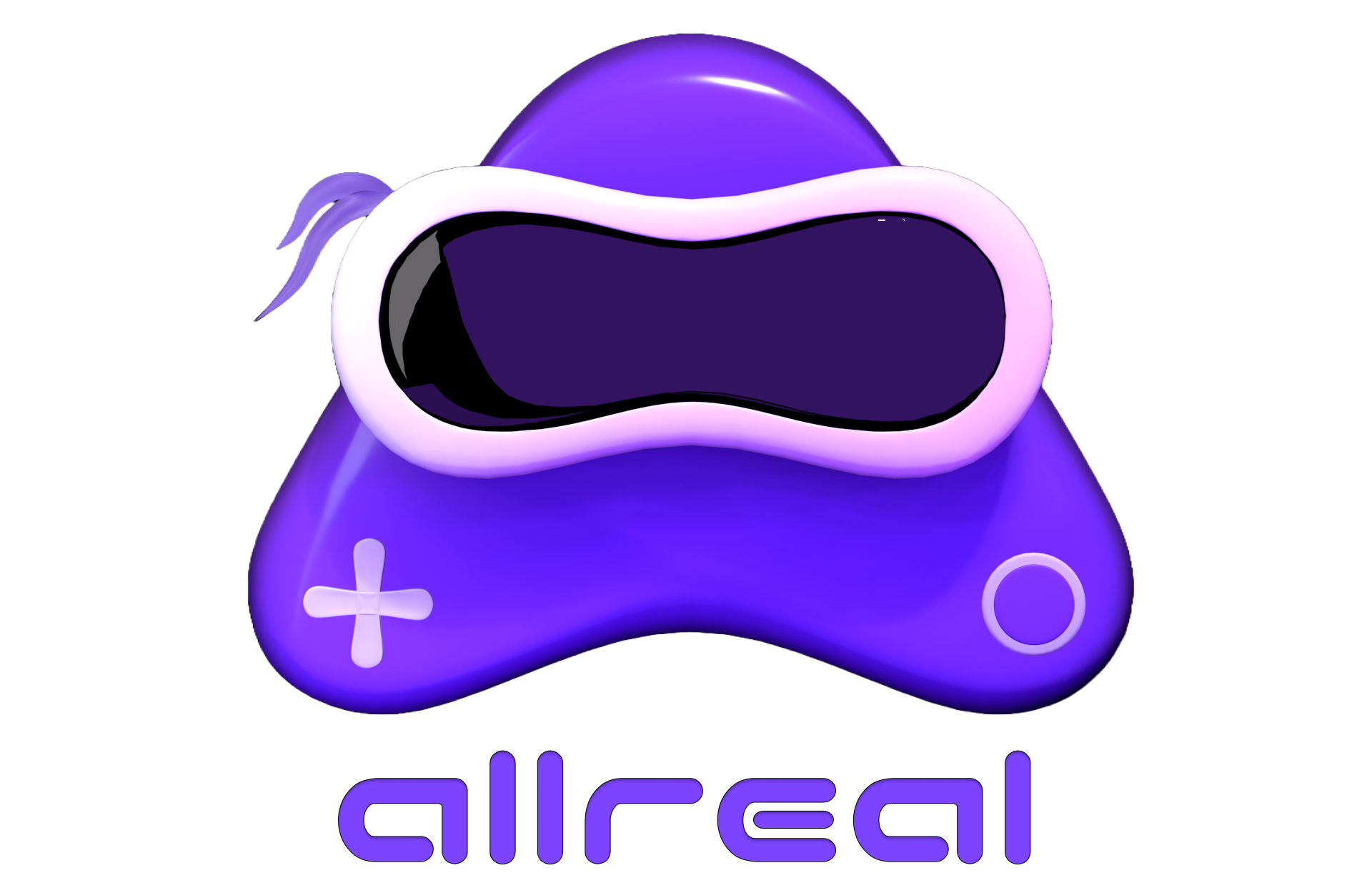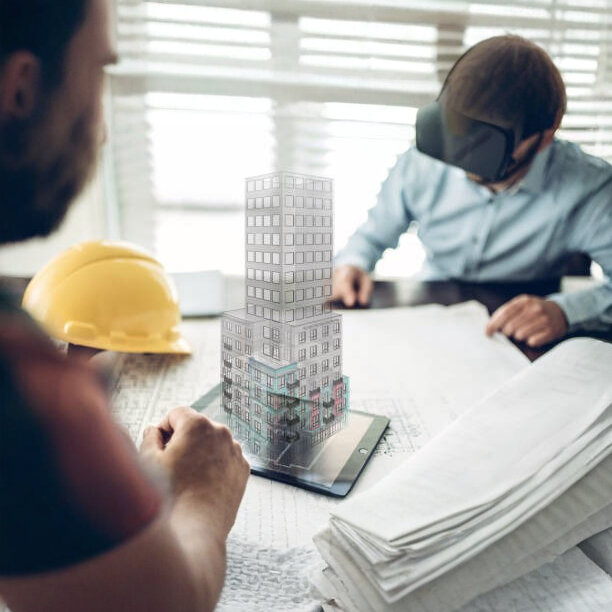Imagine walking through a building before it’s even built. You can explore the layout, feel the space, and visualize every detail—without ever leaving the room. This isn’t science fiction; it’s the power of Virtual Reality (VR) in architecture. As technology continues to advance, VR is transforming how architects design and how clients experience architectural projects. It offers an immersive way to understand and interact with spaces long before construction begins, creating endless possibilities for the future of architecture.
What is Virtual Reality in Architecture?
Virtual Reality in architecture allows users to immerse themselves in 3D models of buildings using VR headsets. Instead of looking at static blueprints or 2D renderings, architects, designers, and clients can now “walk through” their projects in a fully interactive and scaled virtual environment. This shift from visualization to virtual experience is a game-changer for the industry.
From homes and offices to skyscrapers and stadiums, VR allows stakeholders to experience a building in its entirety, seeing how every room connects, how light fills the space, and how materials will appear in reality. It’s a powerful tool that makes architectural design more accessible, flexible, and interactive.
How Virtual Reality Enhances the Design Process

Immersive Visualization
Traditional blueprints and 3D renderings can be hard for clients to visualize. VR bridges that gap by allowing clients to walk through a space and experience it firsthand. The sense of scale and depth that comes with VR is unmatched—whether it’s a towering lobby or a cozy living room, the client can truly feel what the final product will be like.
For architects, this immersion helps communicate design concepts more clearly. Clients can provide more accurate feedback, leading to fewer revisions and faster project approvals. It’s easier to fall in love with a design when you can experience it from the inside out.
Real-Time Collaboration
Architectural design is a collaborative process, often involving multiple stakeholders. With VR, collaboration becomes more efficient and interactive. Teams can review designs together in a shared virtual space, discuss details, and make changes in real-time. Whether working with engineers, interior designers, or contractors, VR allows everyone to see the project from the same perspective, reducing miscommunication and speeding up decision-making.
Imagine a client in New York and an architect in London, both walking through a design together in virtual reality—pointing out features, suggesting changes, and exploring options—all without having to be in the same physical room. VR breaks down geographical barriers and allows for seamless collaboration.
Identifying Design Flaws Early
Design flaws are much harder to spot in a 2D plan or even a traditional 3D model. However, when you’re virtually walking through a space, issues become more apparent. A hallway might feel too narrow, or a window may not provide the expected amount of natural light. By catching these problems early in the design phase, VR helps avoid costly mistakes during construction.
This early detection is critical for improving the efficiency and success of a project. Architects can adjust designs based on real-time feedback, making tweaks to improve both aesthetics and functionality before any building begins.
Improving Client Experience with Virtual Reality

For clients, understanding architectural designs can be overwhelming. Even with detailed explanations, it’s easy for non-professionals to misinterpret plans or miss key elements of the design. VR eliminates this confusion by giving clients a complete and tangible experience of the design.
Seeing is Believing
One of the biggest advantages of VR in architecture is that clients no longer have to rely on their imagination. They can explore the virtual space as if they were physically inside it. This makes the design process more transparent and ensures that clients fully understand the project before it progresses.
They can explore a room’s flow, feel the openness of a layout, or check the view from a balcony—all in real time. VR makes architecture more accessible to everyone, ensuring that clients are more engaged and confident in their decisions.
Personalized Design
Virtual Reality also allows for greater personalization in architectural design. Clients can try out different layouts, materials, and color schemes, instantly seeing how their choices will look in the finished space. Whether it’s choosing the perfect flooring or adjusting the height of a countertop, VR makes customization quick and easy.
This flexibility helps ensure that clients are satisfied with the final design, as they’ve already “lived” in the space through VR. The ability to make real-time adjustments before construction starts means fewer costly changes down the road.
Transforming Marketing and Sales for Architects
Beyond the design process, VR is revolutionizing how architecture firms present and market their projects. Virtual tours of unbuilt properties allow potential buyers and investors to experience the space in an immersive way, even if the building exists only in the planning stages.
Virtual Showrooms
Real estate developers and architects can use VR to create virtual showrooms that showcase their designs to potential buyers. Prospective clients can virtually tour homes, offices, or commercial spaces from anywhere in the world, offering a unique selling point for the project. This technology helps build excitement and trust, especially when clients can see the final result before construction begins.
Impactful Presentations
For presentations to clients, stakeholders, or investors, VR adds a wow factor. Instead of relying on slideshows or models, architects can offer an immersive experience that showcases their vision in stunning detail. These dynamic presentations allow architects to stand out and provide an unforgettable experience for their audience.
Sustainability and Efficiency with VR
Virtual Reality is also helping architects design more sustainable and energy-efficient buildings. VR simulations allow architects to study how a building will interact with its environment, from the way sunlight enters a room to how airflow circulates.
Simulating Environmental Factors
Incorporating natural light is crucial for sustainable design, and VR allows architects to simulate how sunlight will affect a space throughout the day. By adjusting the building’s orientation or tweaking the placement of windows, architects can design spaces that require less artificial lighting, leading to energy savings.
Similarly, airflow and thermal comfort can be simulated in VR, helping architects create buildings that are more comfortable for occupants while reducing the need for excessive heating or cooling systems.
The Future of Virtual Reality in Architecture
As VR technology advances, its applications in architecture will continue to expand. Architects are already exploring how to integrate VR with other technologies, like Artificial Intelligence and Augmented Reality, to create even more powerful design tools.
In the future, we might see fully interactive virtual construction sites, where architects, builders, and clients can collaborate in real-time, ensuring that projects are completed faster and with fewer errors. The possibilities are endless, and VR is set to become a standard tool for architects around the world.
Conclusion
Virtual Reality is not just a tool for architects—it’s a new way of thinking about design. By immersing clients in 3D spaces, allowing real-time collaboration, and improving the overall design process, VR is transforming the architecture industry. It bridges the gap between imagination and reality, making architectural projects more accessible, efficient, and engaging.
As we look to the future, one thing is clear: the potential for VR in architecture is limitless, and we’re only scratching the surface of what’s possible.

